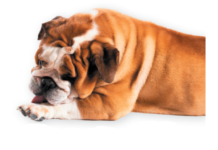Wolves are raised by their mothers and fathers until they are two years old. Not so, dogs. Their mothers are done with them at weaning, around the time a puppy is about 8 weeks of age. Perhaps that’s why there’s such a high mortality rate among pups not living as pets; more than 80 percent of dogs die in their first year of life without human care. But not to worry — there appears to be an across-species evolutionary process at work that helps helpless, newly motherless puppies get adopted into human homes. It involves a young dog’s peak adorableness.
Researchers at the University of Florida, Arizona State, and other educational institutions asked 51 students to rate the attractiveness of 39 dogs of three very different-looking breeds — the Jack Russell terrier, the cane corso, and the white shepherd —from birth to seven months. The upshot: for all three breeds, attractiveness peaked between 6.3 weeks and 8.3 weeks, right around the time their mothers would have stopped feeding them and kicked them out of the den.
It’s not surprising. For all the breeds studied, that two-month window was the point at which they all tended to look “infantile,” with their eyes large, their faces round, and their mouths small. And previous research has shown that’s just the way we most like and want to care for our fellow creatures, human or otherwise.
The study, published in the journal Anthrozoos, doesn’t mean we don’t see our dogs as absolutely captivating once they get closer to three months of age. But from a survival point of view, they are the best heartstring pullers at around two months of age. The researchers hypothesize that rating so high on the cuteness scale right when dogs need us most might very well have played a role in their early domestication.




